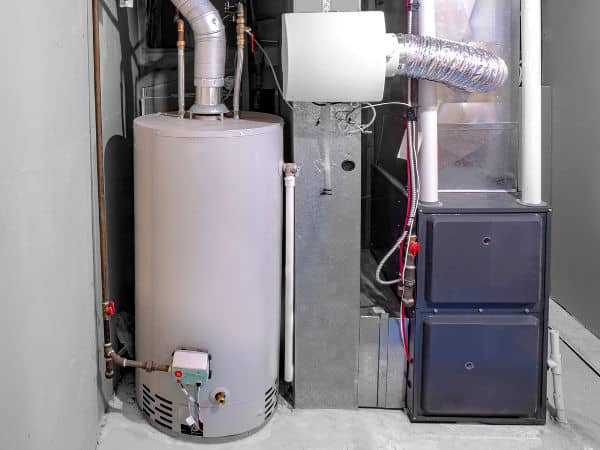Step-by-Step Steps to Caring for Your Home's Hot Water System
Step-by-Step Steps to Caring for Your Home's Hot Water System
Blog Article
This article on the next paragraphs about Tips For Maintaining Your Hot Water Heater is especially stimulating. Don't skip it.

Warm water is crucial for everyday comfort, whether it's for a refreshing shower or cleaning meals. To ensure your warm water system runs efficiently and lasts much longer, routine upkeep is crucial. This short article provides sensible tips and understandings on exactly how to keep your home's warm water system to avoid disturbances and expensive repairs.
Introduction
Keeping your home's hot water system could seem daunting, however with a few straightforward actions, you can guarantee it runs smoothly for many years to come. This guide covers every little thing from comprehending your warm water system to do it yourself maintenance pointers and knowing when to employ professional aid.
Significance of Keeping Your Hot Water System
Regular maintenance not just expands the lifespan of your hot water system however additionally guarantees it runs efficiently. Overlooking upkeep can cause decreased performance, higher energy costs, and even premature failing of the system.
Signs Your Warm Water System Needs Upkeep
Knowing when your hot water system requires focus can avoid significant concerns. Watch out for indicators such as inconsistent water temperature, odd sounds from the heater, or rustic water.
Understanding Your Hot Water System
Prior to diving right into upkeep tasks, it's practical to understand the basic elements of your warm water system. Typically, this includes the water heater itself, pipes, anode rods, and temperature level controls.
Month-to-month Maintenance Tasks
Regular monthly checks can help catch minor problems before they intensify.
Purging the Hot Water Heater
Purging your hot water heater gets rid of debris build-up, boosting efficiency and extending its life.
Checking and Replacing Anode Rods
Anode rods avoid rust inside the storage tank. Examining and replacing them when worn is vital.
Evaluating and Readjusting Temperature Level Setups
Changing the temperature settings guarantees ideal performance and safety.
DIY Tips for Upkeep
You can execute numerous upkeep jobs yourself to keep your hot water system in leading problem.
Looking for Leakages
On a regular basis inspect pipes and links for leakages, as these can result in water damages and greater expenses.
Checking Stress Relief Valves
Evaluating the pressure relief valve ensures it works correctly and avoids too much pressure accumulation.
Insulating Pipelines
Protecting warm water pipelines reduces warm loss and can save energy.
When to Call a Professional
While DIY maintenance is helpful, some concerns need expert experience.
Facility Problems Requiring Specialist Assistance
Examples consist of major leaks, electric issues, or if your water heater is consistently underperforming.
Regular Expert Upkeep Conveniences
Expert maintenance can consist of extensive inspections, tune-ups, and making certain compliance with safety criteria.
Final thought
Regular upkeep of your home's hot water system is crucial for effectiveness, long life, and expense savings. By adhering to these suggestions and recognizing when to seek expert help, you can make sure a dependable supply of warm water without unforeseen disturbances.
How to Maintain an Instant Hot Water Heater
Before tinkering with your hot water heater, make sure that it’s not powered on. You also have to turn off the main circuit breaker and shut off the main gas line to prevent accidents. Also turn off the water valves connected to your unit to prevent water from flowing into and out of the appliance. 2. When you’re done, you have to detach the purge valves’ caps. These look like the letter “T†and are situated on either side of the water valves. Doing so will release any pressure that has accumulated inside the valves while at the same time avoid hot water from shooting out and burning your skin. 3. When the purge valves’ caps are removed, you have to connect your hosing lines to the valves. Your unit should have come with three hoses but if it didn’t, you can purchase these things from any hardware or home repair shops. You can also get them from retail stores that sell water heating systems. Read the user’s manual and follow it to complete this task properly. When the hosing lines are connected, open the purge port’s valves. 4. You should never use harsh chemical cleaners or solutions when cleaning your unit. Make use of white vinegar instead. It should be undiluted and you’ll probably use about 2 gallons. 5. Now flush your water heater. This task should probably take about 40 minutes. We can’t give you specific directions for this because the procedure is carried out depending on the type, model and brand of your heater. With that being said, refer to the user’s manual. 6. When you’re done draining the unit, you have to turn off the purge port valves again. Remove the hosing lines that you earlier installed on each of the water valves. Put the valve caps (purge port) back in their respective places and be very careful so as not to damage the rubber discs that are found inside these caps. 7. Now that everything’s back in place, check your user’s manual again to find out how to reactivate your water heating system. 8. Once it is working, turn one of your hot water faucets on just to let air pass through the heater’s water supply pipes. Leave the tap on until water flows smoothly out of it. https://www.orrplumbing.com/blog/2014/september/how-to-maintain-an-instant-hot-water-heater/

Do you appreciate reading up on Tips For Maintaining Your Hot Water Heater? Place feedback down the page. We will be pleased to find out your views about this article. We hope that you visit us again soon. If you appreciated our article if you please remember to share it. Thanks a bunch for your time. Come back soon.
Click Here Report this page